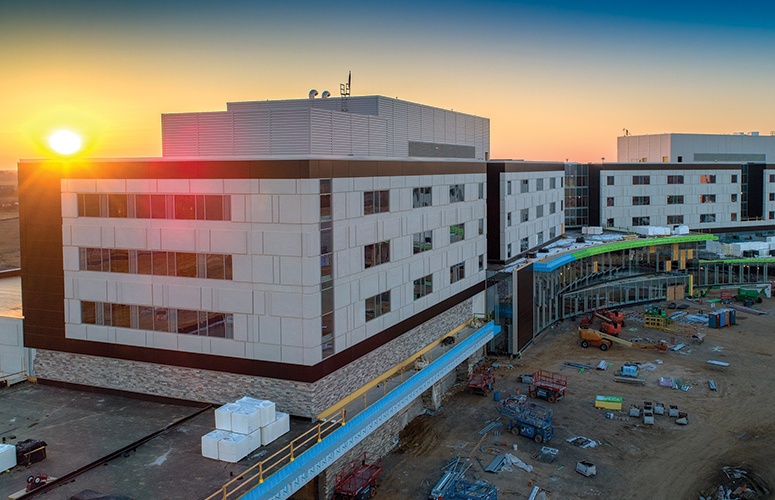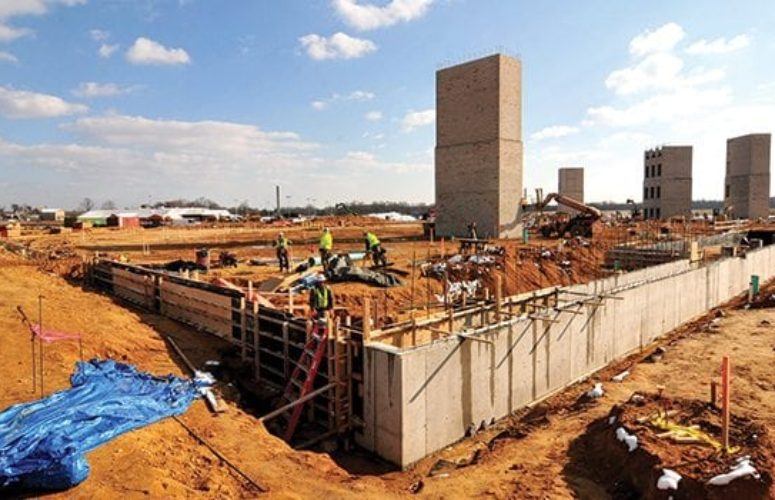
South Jersey’s ‘Steady Surge’
Learn why the Garden State’s lower eight counties are faring well via economic development and existing attributes.
By George N. Saliba, Managing Editor On Feb 12, 2019When individual economic development projects approach or exceed half a billion dollars, they typically have impacts that extend beyond their immediate purposes, including, but not limited to: employment opportunities for local residents; smaller businesses that flourish because of these larger projects; and tax revenues for local and state governments, which, in turn, may then facilitate better services for residents and businesses alike. South Jersey has arguably been entering a new phase of not only large projects, but more major corporations moving to the area in what is already a highly diverse and resilient regional economy.
Inspira Health is slated to open a $356-million juggernaut hospital (Inspira Medical Center Mullica Hill) and cancer center/medical office building in 2019, and it will not only employ physicians and nurses, but the complete array of occupations associated with a large medical complex. Yes, medical care will reportedly be world class, but, again – from a business standpoint – the entire area might experience a boon (construction and associated jobs are already a positive factor).
Separately, through a $400-million public/private partnership over the past nine years, Rowan University in Glassboro transformed what was a dilapidated 26 acres into a thriving community, replete with a Barnes & Noble bookstore, housing for students, and an array of restaurants, for example. What is termed “Rowan Boulevard” is now complete. Rowan University’s president Ali Houshmand tells New Jersey Business, “[This has] created a whole new town that people come to from far away in order to have fun and enjoy these places. It has completely transformed this region.”
This past fall, Rowan University hired approximately 100 new tenure-track professors in conjunction with the fact that it is now the six fastest-growing research university in the nation, with an enrollment that exceeds 19,000. This is arguably an impressive feat, because the nation’s birthrate had dropped somewhat, meaning that college-bound 17- and 18-year-olds today have more choices than they once did due to increased availability. Houshmand says, “In order for you to make your university attractive, you have to truly make it like a home away from home; [there is] not one factor involved. You have as much comfort and amenities that make learning possible; students can feel at home; they can be happy and productive. The other factor is, of course, the whole recognition and reputation of [Rowan University].”
Essentially, the area south of Trenton is “Southern New Jersey,” the latter home to 2.5 million residents and comprised of eight counties totaling 3,700 square miles. The City of Camden is yet another example of positive economic development for businesses: Subaru of North America chose to call it home in recent years, along with nuclear industry giant Holtec International, American Water Company and the 76ers basketball team. The Campbell Soup Company, of course, has been a city mainstay since its inception in 1869, and in addition to employing Camden residents, it has invested $132 million (which remains in Camden) to help revitalize the Gateway District. Campbell Soup says its “employees are passionate members of the local community, in 2017 providing 12,200 hours of volunteer service, and a $1.5 million financial investment in our hometown Camden via the Campbell Soup Foundation.”
The City of Camden is additionally a growing educational epicenter, featuring Rutgers University-Camden, the University of Medicine and Dentistry of New Jersey (UMDNJ), Coriell Institute for Medical Research, Camden County College, Cooper Medical School at Rowan University, and Rowan University at Camden (a university satellite campus). Rowan University has committed approximately $50 million toward the growth of research in Camden. At Camden County’s farther end, Gloucester Township now has business parks either filling their empty spaces or expanding via construction. A planned, approximate 300,000-square-foot goPuff distribution center could yield 600 new jobs over the next three years in Glassboro.
Also deep in South Jersey is Atlantic City, long since home to gaming and entertainment, and which has now recovered from 2014’s shuttering of four casinos; there had additionally been concerns about whether or not Atlantic City (the municipality itself) would file for bankruptcy. Both such specters now appear to be in the proverbial rearview mirror, and the gaming/entertainment world witnessed the concurrent opening of two new casinos last year (Hard Rock Atlantic City and Ocean Resort Casino, the latter which is, at press time, reportedly being sold), in addition to physical property renovations across the industry. Esports (multiplayer video games viewed by spectators) has also been a boon to the city, ushering in yet another profit avenue in an overall gaming environment that saw increased revenue in 2018. South Jersey Gas’ new headquarters and other key developments have also been boons for Atlantic City.
James Wood, CEO of Meet AC, which is the convention/sales arm for all of Atlantic City, tells New Jersey Business magazine that there is a “boost of confidence to the consumer that now tells them Atlantic City is stable and is open for business. We’re seeing incremental but sustained growth in the meetings and conventions market.”
That may potentially be a modest statement, because in 2015, three of the seven years into the future had no business booked. Now, meet AC says, “… we have conventions booked solidly up to seven years out. We are trending at 122 percent of pace, which is a very positive indicator for our future business.”
According to Tourism Economics’ (an Oxford Economics Company) “Economic Impact of Tourism in New Jersey, 2017” report (released in January 2018), 2017 was the first year since 2006 that gambling revenue increased year-over-year at physical casinos. In broader terms, the report also said that more than 100 million visitors came to New Jersey, spending $42.9 billion.
It is not just gaming, entertainment and tourism which makes South Jersey special in so many people’s minds: Marlene Z. Asselta, president of the Southern New Jersey Development Council, talks about farmland preservation, saying, “Salem County [farmland] … is still the most beautiful part of the state in my opinion, and you see that when you drive through a county like Salem County.”
That said, for economic development projects, the New Jersey Economic Development Authority (EDA) has been an incentives/financing linchpin for at least 10 major, recent South Jersey projects, ranging from the aforementioned goPuff, and Stockton University’s Atlantic City Island Campus, to Paolo Foods LLC (a pizza topping manufacturer than located in Bridgeton) and the cloud-based company CorCentric, LLC.
The EDA additionally notes that four Southern New Jersey collaborative workspaces were recently approved for participating in the EDA’s NJ Ignite program.
Overall, as South Jersey continues its long and steady ascension, Asselta echoes others’ sentiments: “I have been around for 30 years, and [the perception back then] was that South Jersey did not get attention from the media or from Trenton, in terms of the governor’s office or the Legislature. But, that was then. This is a different day, and we have a South Jersey legislative delegation that is extremely in tune with our region, and it works very hard on our behalf. So, I can’t say that we are getting overlooked.” Others say the region – with all its excitement – would be difficult to not notice.
To access more business news, visit NJB News Now.
Related Articles:





